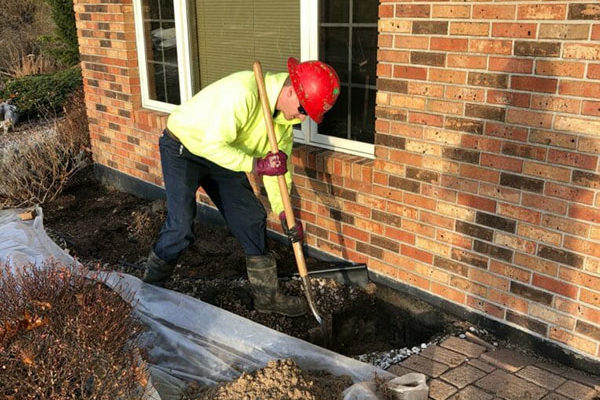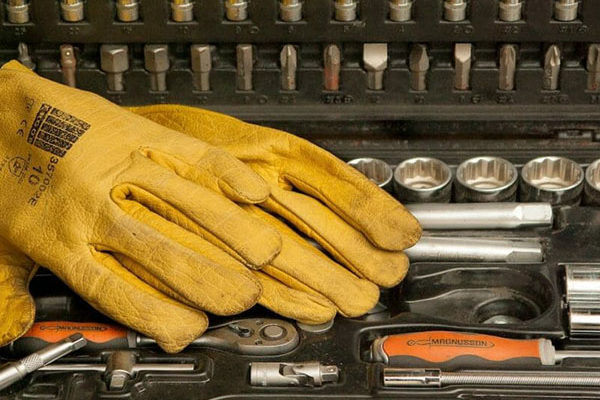Foundation problems often bring about basement damage, as the two are connected. Whether concrete, cinder block, or a mix of both, problems can show up on basement walls and floors, but no worries — Kent Foundation Repair is to help you fix them.
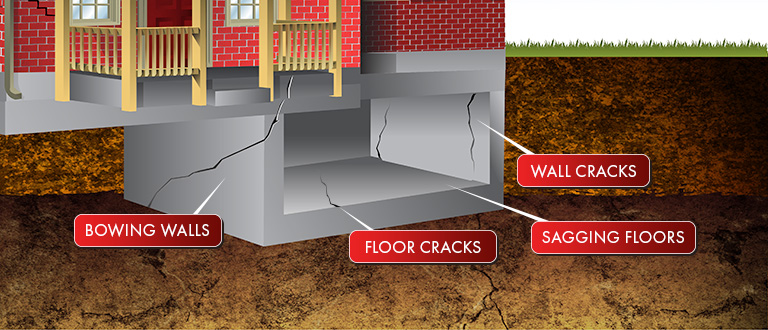
Signs Your Basement Needs Repair
Foundation problems can appear in the basement before anywhere else in the house. If you see any of these issues, request a free foundation evaluation and quote.
- Cracks in basement walls
- Basement walls that bow in or out
- Cracks in the basement floor
- Sagging or slanted basement floor
What Causes Basement Problems?
As basement problems are often foundational, the causes are the same as what we see with slab foundations, with water and soil at the core of the problem.
Without proper grading and drainage, water is more likely to pool under and around not only your foundation, but your basement walls as well. Water causes soil to expand, and when soil dries out, it contracts. This constant growing and shrinking of the soil causes a lot of shifting and movement, which can push your foundation up and down, and basement walls in and out. The freeze/thaw cycles we get with Michigan and Ohio winters can further exacerbate this problem.
Improperly compacted soil can cause a foundation and basement walls to shift and settle unevenly, leading to cracks and bowing. Expansive soils, which are heavily composed of clay and found throughout Michigan and Ohio, expand and shrink in even greater volumes (10% or more) than other soil types. These larger swings of expansion and contraction cause foundation and basement walls to also settle and shift unevenly, creating cracks and instability.
Whether it’s a plumbing or sewer leak, heavy rain, or flooding, a concentration of water can cause serious damage. Wet soil expands, which can push up and out, putting pressure on basement walls and a foundation. Concrete is also porous, so water can seep in and erode a foundation and basement walls.
Yes, tree roots can work their way into the tiniest crack or gaps in basement walls and foundations. But a bigger issue is the amount of water a tree absorbs. A tree that’s 12 inches in diameter and 30 feet high sucks up to 150 gallons of water a day during summer. If a tree is on one side of your house, that side will be drier, causing the soil to shrink, and additional downward pressure on that area of the foundation and outward pressure on a basement wall. With the other side wetter, the soil is expanded, so it has more upward and inward pressure. This uneven distribution of pressure leads to foundation and basement wall problems.
Basement Repair Method
Depending on where your basement is damaged, and how extensive it is, we may recommend a combination of a few repair options.
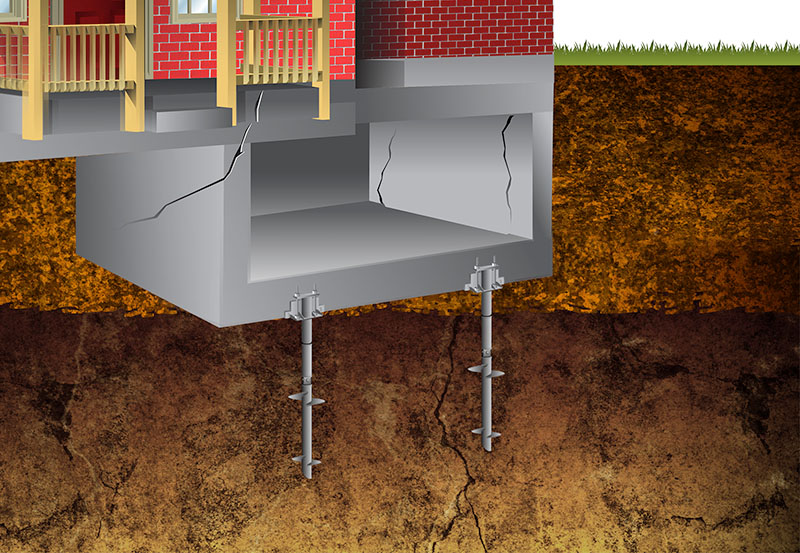
Foundation Leveling
We can stabilize the sinking portions of your basement foundation by driving helical piers (also known as helical piles) into the load-bearing soils beneath it. Once these piers are load bearing, we attach them to heavy duty brackets under your foundation footer, then jack that portion of your home back to level.
How Helical Piers are Installed on Basement Foundation
- At each pier location, our crew digs a hole to expose the portion of the foundation that will get anchored.
- Steel L-shaped brackets are placed under the footing of the basement foundation.
- Helical piers are then driven into the ground until they reach appropriate load-bearing soils.
- The weight of your home is shifted from the unstable soils to the piers using hydraulic jacks.
- he crew attempts to close any floor or wall cracks as they level the foundation. Please note: the goal is to level the foundation. Closing cracks and other cosmetic fixes is a secondary goal and not guaranteed.
- The excavated soil is filled back in to cover the brackets and piers.

Foundation Piers for Basement Wall Repair
While helical piers are typically installed on foundations, Kent Foundation Repair also uses them to prevent or stop lateral movement of basement walls. To do this, we install the steel helical piers horizontally (though angled downward to achieve greater torque), and fasten the steel plates to the basement wall, spacing them apart as recommended to reinforce and stabilize the wall.
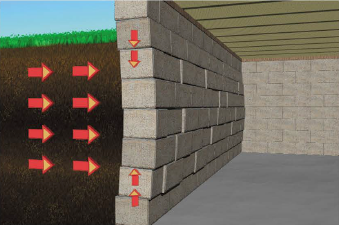
Reinforcement Strips for Basement Wall Repair
We use a patented carbon fiber solution. This is the most unobtrusive and efficient way to correct bowing basement walls. The Reinforcer is made of material tested at 10 times the strength of steel.
These low profile reinforcement strips act like brackets, pulling in vertically on bowing basement walls to stabilize them and work counter to the incoming lateral pressure.
Related Projects
See how we’ve repaired basements for other Michigan and Ohio homeowners.
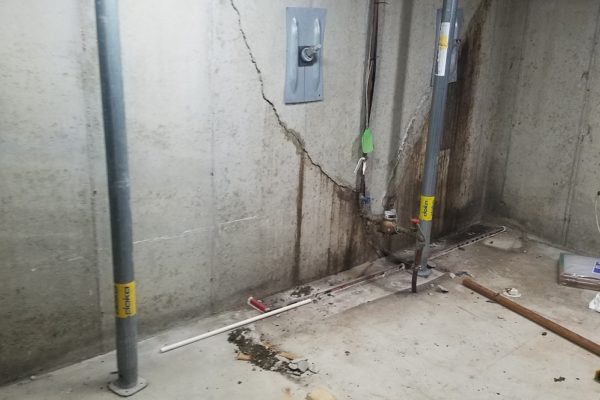
Past Project
Fixing Bowed Basement Walls in Byron Center, MI
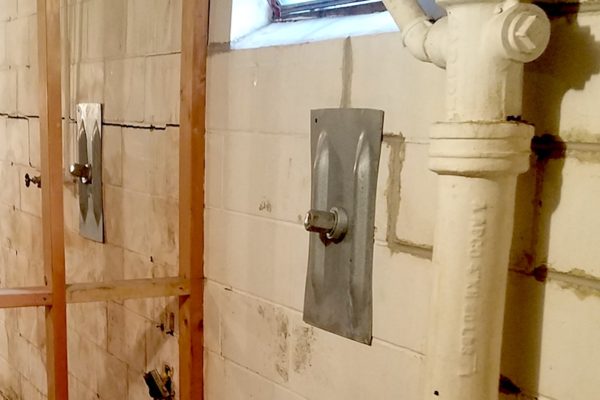
Past Project
Bowing Basement Wall Repair in Sparta, MI
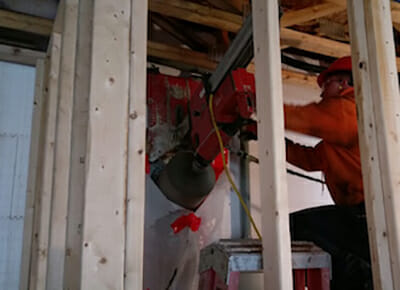
Past Project
Basement Wall Repair in Hamilton, MI
More Helpful Information
Additional resources about basement foundations geared towards homeowners.
Crawl Space Foundation Repair Frequently Asked Questions
How much does basement repair cost?
The cost to repair a basement and the related foundation issues can vary depending on the method, the size of your house, the condition of your current foundation, and more. To get a solid idea of cost, request a free evaluation and estimate.
Do you waterproof basements?
No, Kent Foundation Repair does not have a basement waterproofing service. That being said, if a water issue is identified when we’re evaluating your basement, we recommend you find a licensed and insured contractor who specializes in basement waterproofing.
